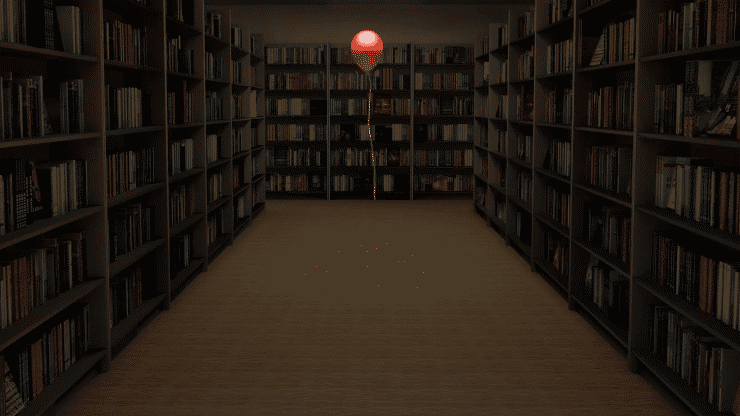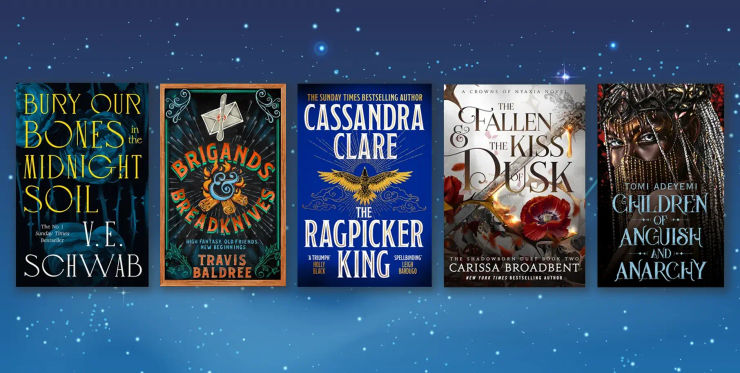Adam Nevill's Top Five Horror Films
'Britain's answer to Stephen King', Adam Nevill, shares his top five horror films that inspired the writing of Last Days, with everything from classics such as The Omen and The Exorcist to more modern horrors such as The Blair Witch Project and REC.
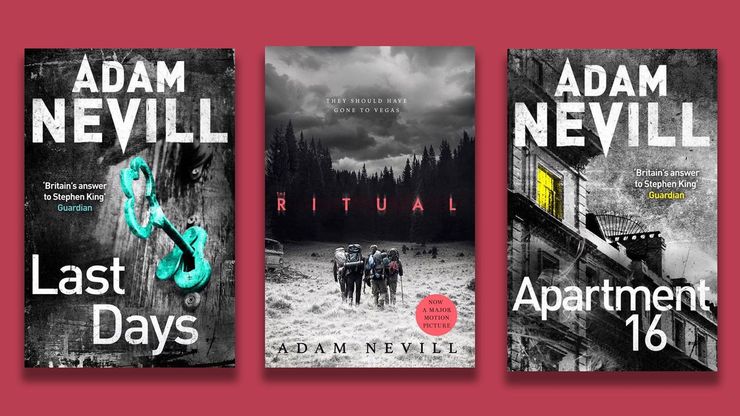
What better way to introduce you to Adam Nevill's Last Days than with the horror films that influenced his writing?
The Guardian have called him 'Britain's answer to Stephen King', his last two novels, Apartment 16 and The Ritual, have been hugely successful and with Last Days winning the August Derlith award, Adam Nevill's influence upon the UK's horror scene is only set to rise.
We asked Adam for his list of the horror films that influenced him...
(And don't miss our edit of the best horror books.)
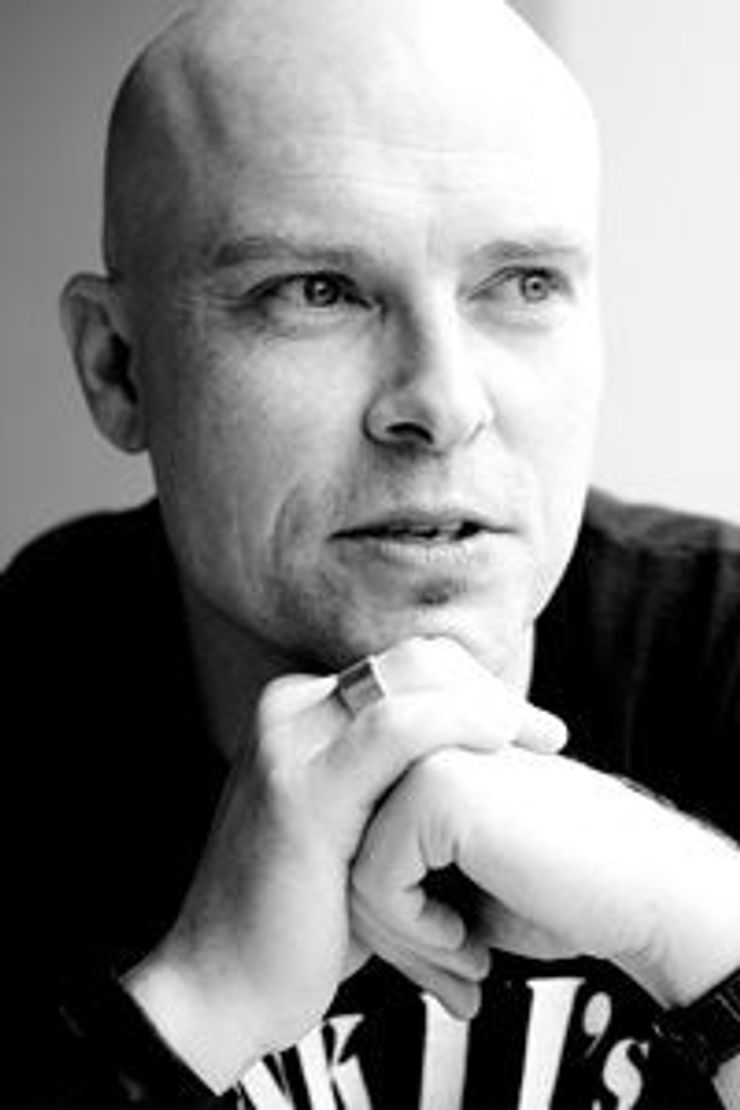
Each of these films are not only amongst my favourite horror films but also went some way into influencing Last Days. The distillation of their respective effects upon my imagination I can say are all within the very blood of Last Days. The medieval to a 16th century aesthetic and the Judeo Christian imagery of The Omen is very evident, the possession of The Exorcist and REC, the guerrilla film making and found footage of REC and The Blair Witch Project, and the strangeness, the weirdness in foreign locations of Don’t Look Now have all found their place in the novel. In fact, as much as The Ritual, I’ve come to realise just how much horror films are influencing my writing these days.
The Omen (1976)
The greatest triumph of this film is the sense of authenticity which makes an unlikely premise convincing. From the chilling quotations from The Book of Revelations, the convincing relics, the visit to a mountain monastery and to Megido, the birthplace of Christianity and the origin of Armageddon, it seems to burrow deep into the Western mind and perfectly stimulate an apocryphal sense of history as well as a universal fear of damnation, of evil triumphing over good. I also cannot think of a better cast of actors in any horror film: Peck, Warner, Remick, Whitelaw, Troughton. Or a better score for that matter, which seems to convey half the horror of the film, beautifully composed from liturgical themes and Gregorian chant by Jerry Goldsmith. As with The Exorcist, I often wonder to what extent the film’s ideas and impact actually shaped the modern view of the devil for a couple of generations. I honestly cannot visit an old church without thinking of this film, and also from time to time still scrutinise photographs for ghostly lines passing through bodies. Who doesn’t think of Jaws before they go for a swim in the sea, or who takes a shower behind an opaque plastic curtain, in an unfamiliar bathroom, without thinking of Psycho? Perhaps horror films have entered our psyche in ways we don’t really acknowledge. Either that or I’ve just watched too many of them.
The Exorcist (1973)
I’d read the novel first, which terrified me in a way books no longer terrify me, but the film came close to traumatising me. I don’t come from a religious background, but both this film and The Omen affected me deeply in the same way. In my imagination, they conjured a sense of an abiding ageless evil that could manifest in the ordinary world, in simple ways that both used and defied natural law. Both films sustain a really strange force on every frame that you often encounter in one or two scenes in good horror films. But whatever curious and powerful ingredient is involved in The Exorcist, endures for the entire film and long afterwards. Again, the cast is everything, and more often missing than not in horror films. Sydow, Cobb, Burstyn, Blair: they made you believe. The courage and characters of the priests I also find very touching, and genuinely heroic without recourse to gunfire or athleticism.
I think the film conjures what I would call a “Spiritual Horror”, as does The Omen, which feels far worse than physical horror because it has a psychic dimension. Both films also suggest the incomprehensible horror of eternal damnation. The secular person may even wonder, what if the religious are right?
Don’t Look Now (1973)
No matter how many times I watch this film it never loses its power. It’s the perfect distillation of what I love about horror. It gives me wonder and awe aplenty – what Lovecraft defined as requisites for the weird tale. The supernatural element, if it is even that, is obscure, speculative, weird, conjured through atmosphere, glimpses, suggestions, the strange beauty of location and weather conditions, implication and subtlety, all enshrouding a heart breaking story of the loss of a child. Watching the film makes you feel like a spell has been cast upon you, or that you are on the verge of, or in danger of, being included in an occult ritual. In danger of repeating myself, look at the cast: Sutherland and Christie for starters.
The Blair Witch Project (1999)
Can never quite understand why so many people don’t like this film. I think it brought horror into the modern age. It made horror new and exciting again. It rewrote the rule book on special effects and budget and the whole approach to film making. It was thoroughly groundbreaking and cutting edge without a trace of hyperbole that has denigrated such phrases into being ineffectual when applied to most things. Blair Witch, for me, was genuinely cutting edge and groundbreaking. And this is achieved without a hint of contrivance. It’s also a terrifying film. What is evoked through sound, light, a shaking camera and (here I contradict myself), some of the most natural acting from complete unknowns, also underwrites the film with a strange, believable esoteric force. And don’t forget a wet deciduous wood – they are all eerie. It’s in our genes to fear them.
The first I heard of its existence was from a colleague asking me if I had heard about the film they found … Another chimed in to say, it’s fake, totally manipulated marketing … I was curious. People who didn’t watch horror were arguing about the authenticity of a horror film about to go on general release in the US. The age of found footage was upon us, then came Ringu … but the genre failed to be replicated this well again, or hardly at all to my knowledge until Paranormal Activity and REC seemed to restore it. Found footage and guerrilla filmmaker horror are subgenres of horror I unashamedly love. The very fact that a group of aspiring filmmakers and friends self-financed and made Blair Witch, and that a man shot Paranormal Activity on his own equipment in his own home, is astounding and I salute their DIY approach. They may very well be the future, the true precursors of new horror if the genre goes out of fashion with the big studios.
REC (2007)
This list was hard to get down to five films. But I wanted to be honest on a film’s enduring effects. Other films have inspired me more (a good horror film is not just about being scared), and frightened me more than REC, but when I was younger. The last 15 minutes of this film, however, took me on a very strange trip. It frightened me more as an adult man than anything I’d seen at the cinema in middle age. I put my hands over my eyes. And am not ashamed to admit it.
But the Madeiros Girl could be the most hideous supernatural thing ever created in horror cinema that you actually get to see. Perhaps matched by the Voodoo doll in Trilogy of Terror, which kept me up nights as a pre-adolescent.
Again, the naturalist, social realist execution of this film is masterly and embraces the digital age. The lengthy prelude to the investigation of the penthouse apartment, by the news crew, hints at, but cannot fully prepare you, for “her”.
Discover Adams books, below.
Last Days
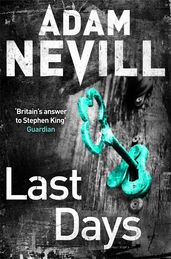
In Last Days, Indie filmmaker Kyle Freeman is a man at the end of his tether. He faces bankruptcy and obscurity until he lands a commission to make an unusual documentary. The Temple of the Last Days was a notorious cult, which reached its bloody endgame in the Arizona desert in 1975. Ever since, the group’s rumoured mystical secrets and paranormal experiences have lain concealed behind a history of murder, sexual deviancy and imprisonment.
Kyle and his one-man crew film the cult’s original bases in London and France – finally visiting the desert crime scene where the cult self-destructed in a night of ritualistic violence. But when Kyle interviews survivors, uncanny events plague his shoots. Frightening out-of-body experiences and nocturnal visitations follow, along with the discovery of ghastly artefacts. Until Kyle realises, too late, that they’ve become entangled in the cult’s hideous legacy.
